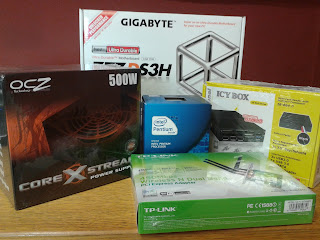I started my journey into open-source in 2008 after the hard drive in my Windows XP machine died. Little did I know at the time that pursuing my interest in Linux would ultimately lead me to a career in IT! Nonetheless, here I sit in my workshop waiting for the telephone installation and marketing materials before I can make my first million.
Whilst sorting through some bits and pieces that I thought might come in useful for my new venture, I stumbled across that old hard drive and found myself wondering whether I could salvage any of the data. I confess that I thought it unlikely, I was certain that the drive had suffered a physical failure and wouldn't even spin up, but I thought trying might make for an interesting diversion while waiting for suppliers and customers (not necessarily in that order). Imagine my surprise then when I plugged it into my workshop pc and Ubuntu recognized it instantly.
However, whilst I could see the drive in Nautilus, I couldn't mount the file system; Ubuntu complained that Windows had not shut down properly and was corrupt. Nonetheless, a promising start!
I put the XP installation disk into the optical drive and selected the repair option from the menu. In XP, this option drops you to a command line; something Microsoft calls the Recovery Console1. From here I tried:
- fixmbr
- fixboot
with no success.
Following advice from the Ubuntu error message, I then tried chkdsk /f. Chkdsk is a utility which checks the status of the disk for errors and the f switch attempts to repair any problems the utility finds. However, although the utility ran, it failed with errors after a couple of hours and I still couldn't access any data. A second attempt also failed.
It was then that I recalled a vague reference to problems with chkdsk running on an XP SP2 installation using and XP SP1 installation disk (sorry, I can't find the reference now). My original installation was an OEM install by DELL, an XP Professional SP1a OS. Fortunately, my laptop came with XP Professional SP2, so I thought I'd give the installation disk a try.
It took several hours, but chkdsk reported that it had fixed errors on the disk. I tried booting to XP but it hung on the splash screen and, as yet, I've not been able to boot from the disk. But, I can access all of the files from Ubuntu! I've found several photographs that weren't included in my backups and that I'd thought had gone forever, so I'm pretty chuffed.
The question now is what to do with the disk. Clearly, the drive must be returned to the original PC if I'm to run XP and I can still try:
- fixmbr
- copy d:\i386\ntldr
- copy d:\i386\ntdetect.com
- bootcfg /rebuild
if I want to get XP running, but my Dimension 8400 has been running Ubuntu for five years; why would I want to regress to XP? The fact is that I achieved what I set out to achieve: access to data I thought lost.
The irony is that, had I not simply replaced my PC when the original XP installation failed, I might never have investigated Linux.
Sources & References:
Notes
- See Meyers 2012 pp.820-823






































